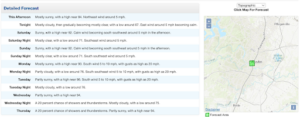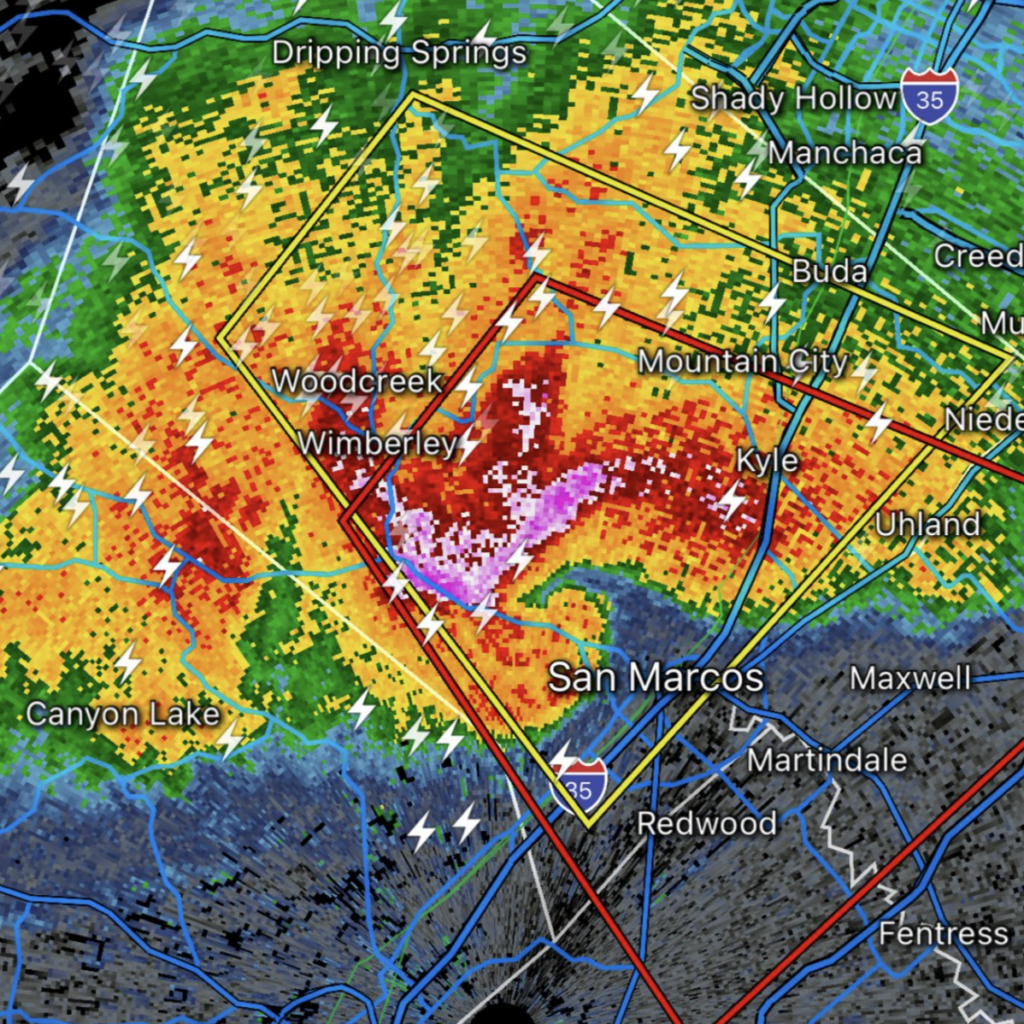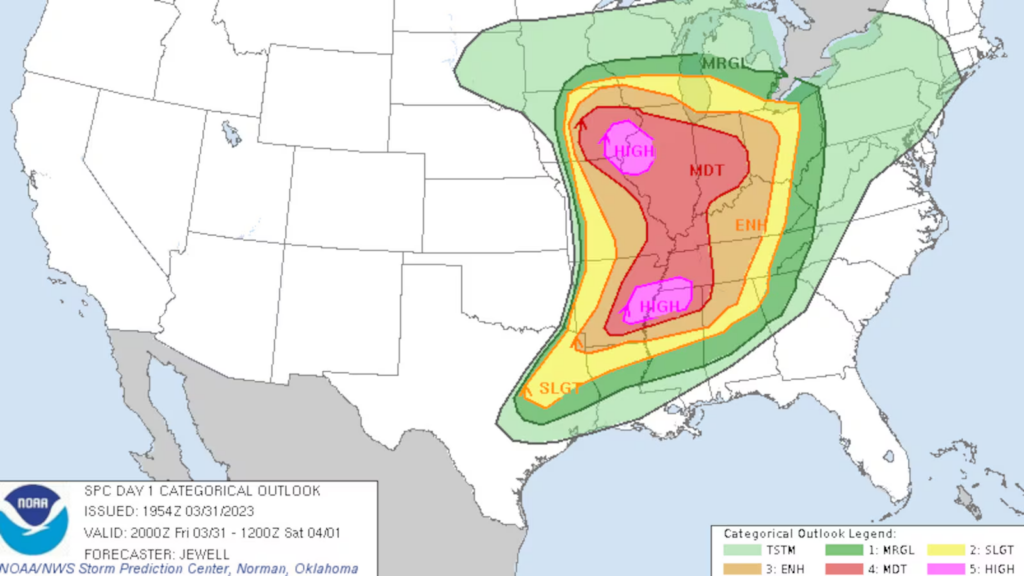
Check smoke alarms and carbon monoxide detectors
Contact your healthcare provider If you are sick and need medical attention. Wait for further care instructions and shelter in place, if possible. If you are experiencing a medical emergency, call 9-1-1.
Gas up your car and (if you have one) generator. Check for old, bad gas in the generator.
DriveTexas.org shows real time road conditions. Travis County
Road Closures shows planned closures.
For organizers: Austin Real Time Road Conditions is the data on the open porta
To get a forecast from the National Weather Service (English only) in your exact location, go to the page for Austin/San Antonio, and scroll down to this section. Click your exact location on the map and see the detailed forecast change for your area.

Get supplies ready in case you need to stay home for many days without power. Get extra water, non-perishable food, pet food, and fast-burn logs for cooking outside. If you don’t have one, get an electric heater.
Have extra batteries for radios and flashlights.
Think about each person’s special needs, like medicine.
Don’t forget about your pets. Bring them inside and lock pet doors.
Cover windows with bubble wrap for extra insulation.
In addition to buying bottled water, store extra water in bathtub, sink or containers.
Alert vulnerable neighbors and share warming supplies. Think about people who are unhoused, older adults, and people living alone or with physical disabilities.
If the tornado is visible, far away, and the traffic is light, you may be able to drive out of its path by moving at right angles to the tornado.
(Drive away from the tornado in a direction that is not directly towards or away from it. The idea is not to try to outrun it, but to get out of it’s path.)
If you are caught by extreme winds or flying debris, park the car as quickly and safely as possible — out of the traffic lanes.
Stay in the car with the seat belt on. Put your head down below the windows; cover your head with your hands and a blanket, coat, or other cushion if possible.
If you can safely get noticeably lower than the level of the roadway, leave your car and lie in that area, covering your head with your hands.
Avoid seeking shelter under bridges, which can create deadly traffic hazards while offering little protection against flying debris.
Cover your head or neck with your arms and putting materials such as furniture and blankets around or on top of you.
If your power is on, Pay attention to EAS, NOAA Weather Radio, or local alerting systems for current emergency information and instructions.
Children sometimes need to ask questions to feel safe, and will usually ask questions they are ready to hear the answer to. Follow their lead, answering the questions they ask.
Kids may want to help with light tasks.
Reading books and playing games can help kids feel more normal and less scared.
Check the city website if you need shelter. Information on warming centers and shelters can be found on HSEM’s Active Emergency Information Hub page and the city’s shelter page.
Shelter for people who are unhoused can be found on the city webpage for Homeless Resources.
If you have sought shelter, return home only when authorities say it is safe. Avoid driving except in emergencies.
Get insurance estimates early. If you don’t have insurance, check the city website for repair programs.
Check the city website if you need shelter.
Apply online for FEMA as soon as possible. If you need assistance, look to see if a disaster recovery center is set up near you.
Check the city website if you need shelter.
Have a go-to network of neighbors and friends you can stay with.
Know where your nearest warming centers, shelters and resilience hubs are located.
Sign up for alerts through CTOSH, Warn Central Texas, and if needed, the Unhoused Alert System.
Trim trees near power lines or old, dead limbs. Trees on your property that could fall on lines between the pole and your house are your responsibility.
Buy a generator and battery-powered chargers for phones and other important equipment.
gathering emergency supplies, cleaning supplies, non-perishable foods, water, medical supplies and medication.
Include pets in your family’s emergency plan.
Make sure you have a kit ready with things kids need like diapers, baby food, and toys. Talk to your kids about what to do in winter storm so they’re not scared.
Sign up for local emergency help for older people. This help can include special support if you need to leave your home quickly. Keep your medicines and supplies where you can get them easily. Connect to a friend. Consider staying at someone else’s house.
Make sure your mobility tools are ready and working. Try to have someone you can call for help in an emergency. Consider staying with a friend.
Keep your pregnancy care items and medicines in your emergency kit. Be sure to have extra clean water on hand. Stay near clean water and rest when you need to. Stay connected to a nearby friend and have a back-up plan.
Get a pet emergency kit with food, water, and medicine. Make sure your pets have tags with your contact information. Practice how you will leave with your pets. If you have to leave your pet behind…
Keep a list of your medicines and enough for at least a week. Have a cooler ready for medicines that need to be kept cold.
Sign up for emergency alerts that show messages on your phone or computer. Keep extra batteries for any devices you use. Let emergency workers know that you need visual alerts.
Have your cane or guide dog’s harness ready in case you need to leave quickly. Mark your supplies so you can tell what they are by touching or feeling them. Make sure you can get alerts through sound or vibration.
Learn about buses and trains you can use in an emergency. Find someone nearby who can give you a ride if you can’t use public transport.
Make an emergency kit for the person you take care of. Include their special foods and medical supplies. Plan what to do if you can’t get to them.
Find out which local services give information in your language. You can use translation apps on your phone that work even when you’re not online.
Keep all your health stuff like prescriptions and insurance information in one place. Have enough medicine and special food ready.
Know where shelters are and what you need to get in. Keep your important papers like ID in a waterproof bag. Keep a bag with food, water, and a first aid kit. Stay clean to avoid getting sick.Stay up to date on where to go when it floods.
Avoid windows. Go to the lowest floor, small center room (like a bathroom or closet), under a stairwell, or in an interior hallway with no windows. Crouch as low as possible to the floor, facing down; and cover your head with your hands. If you have a metal bath tub, that may offer a shell of partial protection, but not plastic or fiberglass ones, which are easily penetrated by projectiles. Even in an interior room, you should cover yourself with some sort of thick padding (mattress, blankets, etc.), to protect against falling debris in case the roof and ceiling fail. A helmet can offer some protection against head injury.
Get out! Even if your home is tied down, it is not as safe as an underground shelter or permanent, sturdy building. Go to one of those shelters, or to a nearby permanent structure, using your tornado evacuation plan. Your plan could include staying with someone who is in a sturdy permanent structure, if a tornado threat is forecast. Most tornadoes can destroy even tied-down mobile homes; and it is best not to play the low odds that yours will make it. This mobile-home safety video from the State of Missouri may be useful in developing your plan.
Term | Meaning | Threat Level | Action |
Warning | Weather hazard is likely, going to happen or happening. | Threatens life and/or property. | Get to Safety Now! |
Watch | Risk or weather hazard in the near future. | Could threaten life or property. | Have a Plan to Get to Safety. Watch closely. |
Advisory | Weather hazard is likely, going to happen or happening. | Could cause problems or get worse. | Use Caution. Check for Updates. |
Outlook | Risk of weather hazard in next week. | Could threaten life or property or inconvenience. | Prepare Ahead. Check for Updates. |
EF Rating | Wind Speeds | Expected Damage | Photos |
EF-0 | 65-85 mph | Minor’ damage: shingles blown off or parts of a roof peeled off, damage to gutters/siding, branches broken off trees, shallow rooted trees toppled. | |
EF-1 | 86-110 mph | Moderate’ damage: more significant roof damage, windows broken, exterior doors damaged or lost, mobile homes overturned or badly damaged. | |
EF-2 | 111-135 mph | Considerable’ damage: roofs torn off well constructed homes, homes shifted off their foundation, mobile homes completely destroyed, large trees snapped or uprooted, cars can be tossed. | |
EF-3 | 136-165 mph | Severe’ damage: entire stories of well constructed homes destroyed, significant damage done to large buildings, homes with weak foundations can be blown away, trees begin to lose their bark. | |
EF-4 | 166-200 mph | Extreme’ damage: Well constructed homes are leveled, cars are thrown significant distances, top story exterior walls of masonry buildings would likely collapse. | |
EF-5 | > 200 mph | Massive/incredible’ damage: Well constructed homes are swept away, steel-reinforced concrete structures are critically damaged, high-rise buildings sustain severe structural damage, trees are usually completely debarked, stripped of branches and snapped. | |
Source: National Weather Service |
|
Safety In Apartments |
|
|
GET TO THE LOWEST FLOOR & AWAY FROM WINDOWS |
1st floor apartment bathrooms or laundry rooms are great places! |
|
UNDERGROUND GARAGE |
Offers great protection! |
|
PROTECT YOUR HEAD |
Put as many walls between you & the outside. Use a blanket, pillow, or helmet. |
|
KNOW YOUR NEIGHBORS |
Make friends with your 1st floor neighbors if you live on a higher level. |
|
Source: NOAA |
|
| Safety In Mobile Homes | |
| GET OUT! | Even if your home is tied down, it is not as safe as an underground shelter or permanent, sturdy building. Go to one of those shelters, or to a nearby permanent structure, using your tornado evacuation plan. |
| HAVE A PLAN | Your plan could include staying with someone who is in a sturdy permanent structure, if a tornado threat is forecast. |
| MOBILE HOME RISKS | Most tornadoes can destroy even tied-down mobile homes; and it is best not to play the low odds that yours will make it. |

What Do the Radar Colors Mean? | |
Light Blue | Very light rain or drizzle. |
Light Green | Light rain or drizzle. |
Green | Moderate rain. |
Yellow | Heavy rain. |
Orange | Very heavy rain. |
Red | Intense rainfall, thunderstorms. |
Dark Red | Very intense thunderstorms, possible severe weather including hail. |
Pink | Extremely intense thunderstorms, likely severe weather including large hail or tornadoes. |
Purple | Extreme weather conditions, possibly indicating tornado debris signature. |
White | Can mean lightning strikes or mixed precipitation (snow/sleet). |

